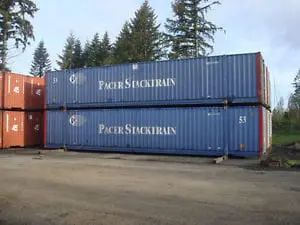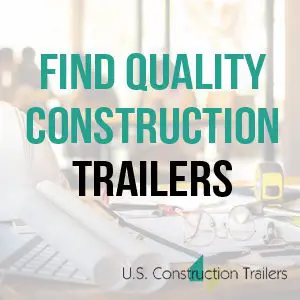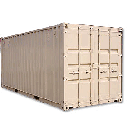
The Pros and Cons of Renting vs. Owning Portable Steel Storage Units
Over the past 12 years running a modular and mobile office supply company here in Texas, I’ve had more conversations about portable storage than I can count. Whether I’m helping a construction crew secure equipment or a business store overflow inventory, one question always comes up: “Should we rent or buy our steel storage container?”
It’s a fair question—and like most smart business decisions, the right answer depends on your specific needs, timeline, and budget. Portable steel storage units are one of the most practical on-site storage solutions out there. They’re secure, weatherproof, durable, and mobile. But deciding between renting and owning comes down to how, how often, and for how long you plan to use them.
Let me walk you through the pros and cons of each option so you can make a decision that fits your workflow and your bottom line.
Renting Steel Storage Containers: The Flexible Choice
Renting is often the first step for businesses that need quick, reliable storage without a long-term commitment. It’s perfect for short-term use or temporary project needs.
Pros of Renting
Low upfront cost. You don’t have to make a big investment up front. Rental fees typically range from $75 to $200 per month depending on the size and customization.
Short-term flexibility. Renting gives you the freedom to use a container for a few weeks or months and return it when you’re done—ideal for seasonal needs or construction timelines.
No maintenance headaches. Most rental agreements include maintenance, meaning if the container develops a leak or the doors start to stick, the provider handles repairs or swaps it out.
Delivery and pickup are handled. You don’t need to worry about transporting the container—delivery, placement, and retrieval are usually part of the package.
Cons of Renting
No long-term ROI. Rental costs can add up over time. If you end up needing the unit for more than a year or two, you’ll likely pay more in rent than the cost to purchase one outright.
Limited customization. Most rental containers are standard issue. If you need shelving, lighting, insulation, or electrical access, your options may be limited or cost extra.
Availability may vary. During busy seasons, container availability can be tight. You may have to settle for a size or condition that isn’t ideal.

Buying Steel Storage Containers: The Long-Term Investment
If your business consistently needs extra storage or operates in remote or permanent job sites, buying a steel container often makes more sense financially and logistically.
Pros of Buying
Long-term cost savings. Purchasing a container typically costs between $2,500 and $6,000 depending on size, condition, and add-ons. Compared to long-term renting, this can pay for itself within 12–24 months.
Full customization. When you own the unit, you can modify it however you like. I’ve had clients add shelves, solar lighting, climate control, roll-up doors—you name it.
Always available. Owning a container means it’s yours to deploy whenever and wherever you need it. No waiting for delivery or hoping the rental company has availability.
Added resale value. If your needs change, you can always sell the unit. Steel containers retain value surprisingly well, especially if they’ve been maintained.
Cons of Buying
Higher upfront cost. While it’s cheaper long-term, buying still requires a larger initial investment, which may not be ideal for all businesses.
You handle maintenance. Once you own it, any rust, door issues, or structural repairs fall on you or your team to fix.
You need space. Storage containers aren’t small. If you’re not using it all the time, you’ll need a place to park it when it’s not in use.
Delivery and setup are extra. When you buy, you typically pay for delivery and placement, which can cost a few hundred dollars depending on your site’s accessibility.

Which Option Is Right for You?
Here’s how I help clients decide:
-
Rent if… you need storage for a few months or for a single project. It’s also the right call if you’re not sure how long you’ll need the unit or if you’re trying out container storage for the first time.
-
Buy if… you have recurring storage needs, want to customize the unit, or plan to use it across multiple projects. It’s also the better choice if you want to control your assets long-term.
In many cases, clients start by renting and then purchase a container once they’ve confirmed the value. Some even negotiate lease-to-own terms with their provider, which can give you the best of both worlds.
Final Thoughts
Portable steel storage containers are one of the most versatile tools in a modern business’s arsenal. Whether you’re storing tools, materials, inventory, or equipment, the decision to rent or buy can significantly affect your budget and operational efficiency.
In my experience, the best choice depends on how often you’ll use it, how much flexibility you need, and whether customization is important to your workflow.
If you’re unsure, I’d be happy to walk you through the numbers based on your current and projected usage. I’ve helped dozens of companies across Texas and beyond make smart storage decisions that paid off in the long run.
Written by Mark Livingston, a graduate of Arizona State University with a bachelor’s degree in Construction Management. As the owner of a successful modular and mobile office supply company in Texas for 12 years and a writer and editor for US Construction Trailers, I specialize in helping businesses find cost-effective and efficient office space solutions that improve workflow and maximize ROI.

Leave a Reply